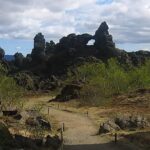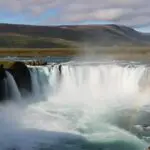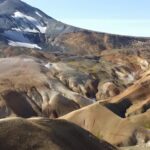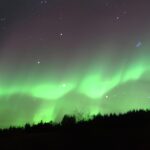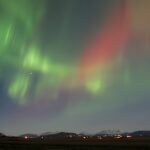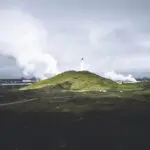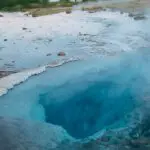Icelanders are famous for their love of fireworks, and foreigners have described New Year’s Eve as sounding like a war zone. New Year’s Eve is Gamlárskvöld in Icelandic, meaning old year’s evening. Traditionally, families come together, have dinner, maybe go to a bonfire, and watch the Áramótaskaup (New Year’s Eve Comedy Show).
Then when that’s over at 11:30, everyone goes outside to shoot up fireworks or watch what others have. The number of fireworks lighting the sky goes up steadily until midnight when everything goes completely berserk. We do not have a special New Year’s Eve Countdown, but people make sure they have the time right. After midnight is when all the parties begin.
It is quite a sight, and having a good vantage point is essential; you won’t see much if you have a huge tree or a building right before you.
If you’re not in the country, there’s no need to worry! ‘Live From Iceland‘ offers an array of webcams providing diverse views of Reykjavik, allowing you to witness the spectacular fireworks displays right from the comfort of your own home. So, sit back, relax, and enjoy the vibrant spectacle of lights and colours from wherever you are!
Five Best Places to Watch the New Year’s Eve Fireworks
Wherever you will find a fairly high or flat vantage point is good to watch the fireworks in the capital area, but these are the five favourite spots.
Skólavörðuholt by Hallgrímskirkja
In recent years, the grounds of Hallgrímskirkja have become popular among tourists and locals. You may not see much, but this place is more for the atmosphere than seeing fantastic fireworks show. Those who want a little bit smaller crowd can go to Landakot Hill where the Catholic Church is.
Ægissíða Beach
The beach in Reykjavik’s west side is a popular spot for locals to shoot fireworks. It is also one of the places where a small bonfire is set up, so there’s a lot to see. It is a good place for watching fireworks because it is a large flat area and gives views over a large portion of the capital area.
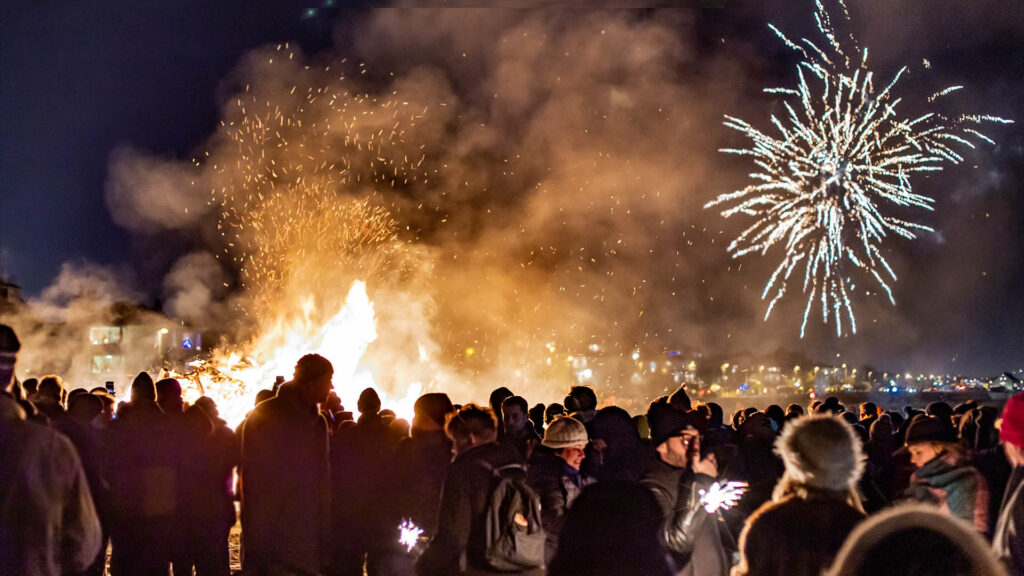
Öskjuhlíð Hill
One of the highest points in Reykjavik. It is also where the Pearl is, with its 360° viewing deck. Even if you don’t go to the deck, you should get a good view of Reykjavik and the capital. It’s good to be there at least 23:30.
Laugarnes Peninsula
About half an hour’s walk from Harpa, a small peninsula gives a great view over Reykjavik’s downtown coastline.
Breiðholt Hill
The suburb Breiðholt is the highest point of Reykjavik.
New Year’s Eve Fireworks
The first written source of the use of fireworks in Iceland was in 1662, when Icelanders signed a deal and agreed that the Danish kingdom would be inherited. Up until that point, the Danish State Council had elected the king.
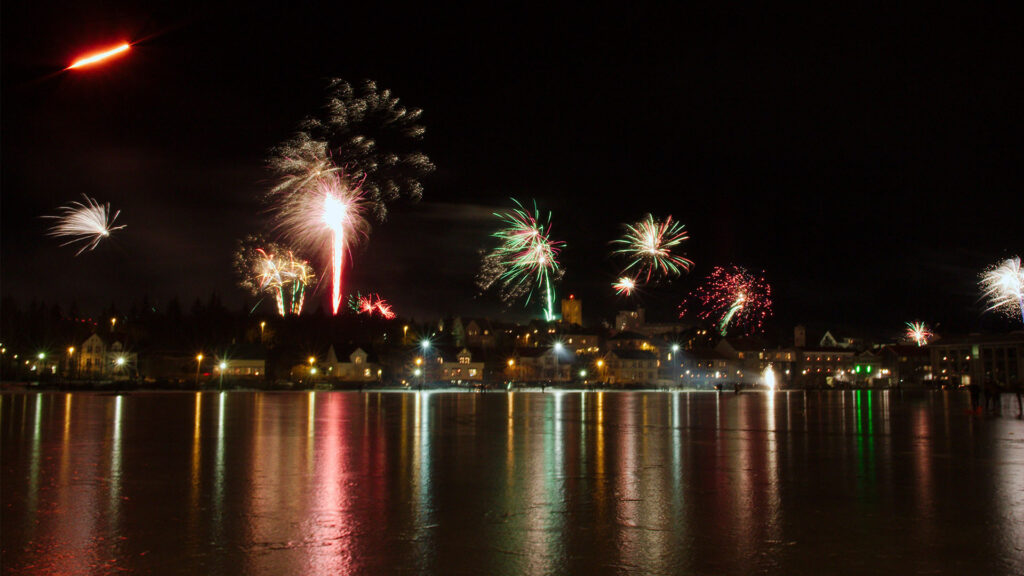
Then when Iceland celebrated its 1000 anniversary in 1875, firework shows were held at least in Reykjavik. The celebration in Reykjavik was held twice because people felt it was a failure the first time, so it was held again a month later.
Icelanders began “shooting up the old year,” so to speak, on New Year’s in the 1890s, and we haven’t looked back since. For the longest time, the ICE-SAR teams had a monopoly on selling fireworks as it was and still is their primary way of funding. A few years ago, the laws were changed, and a few privately owned companies sell fireworks.
New Year’s Eve Bonfires
Bonfires have been lit on many occasions in many countries for centuries. It is not known that New Year’s bonfires were held in this country earlier than in the latter half of the 18th century. Before that time, timber and other firewood were simply too valuable to be wasted on such things. The very first example is from the year 1791, when schoolboys from Hólavallaskóli in Reykjavík gathered barrels and other wooden debris and set fire to a hill they called Vulcan (but Vulcan is a foreign name for a volcano). The hill in question is probably Landakot hill.
More than 50 years later, New Year’s Bonfires (and on the Last Day of Christmas) seem to have become quite common. However, judging by the description of Klemens Jónsson (b. 1862), they were not very festive, and he says that there was a lot of drunkenness and disorder. At this time, they also started to dance an “elf dance” around the fires. That custom originated from the boys at the Learned School, who, in 1871, premiered the play New Year’s Night, which featured elves. They then got involved on New Year’s Eve, together with students from there and from Copenhagen, and dressed up as light elves or black elves, walked down to The Pond in Reykjavík with torches in hand, danced and sang elf songs.
This year, bonfires will be lit for the first time since 2019. There are 10 places in Reykjavik with bonfires, but more are in the capital area and around the country, totaling almost 100. They usually start at around 20:00-21:00.
Ægissíða (small one) – Also a great place to watch the fireworks. Starts at 20:30.
Skerjafjörður, by Skildinganes 48-52 (small one) – Close to Ægissíða. Also, a great place to watch the fireworks. Starts at 21:00.
Suðurhlíðar, below Fossvogur Cemetery (small one) – A great place if you’re going to see the fireworks from Öskjuhlíð. Starts at 20:30.
Laugardalur, below Laugarásvegur 18 (small one). Starts at 20:30.
Geirsnef (large one) – This is usually a dog park but is used for a bonfire on New Year’s Eve. It’s not very handy to get to if you don’t have a car. Starts at 20:30.
Jafnarsel (small one) – in Breiðholt. A good one to check out if you are going to watch the fireworks from Breiðholt. Starts at 20:30.
Rauðavatn Lake (north side – small one) – This is in the Reykjavik suburbs. Starts at 20:30.
Gufunes by Gufunesbær house (large one) – The only large bonfire in Reykjavik. It gives pretty good views over Reykjavik as well to watch the fireworks. Starts at 20:30.
Klébjerg, Kjalarnes (small one) – Kjalarnes is on the way to Akranes, under the hills of Esja. You will have to have a car to go there. Starts at 20:30.
Úlfarsfell (small one) – Another suburb of Reykjavik. Starts at 15:00.
Please note that the use of fireworks or fireworks flares near bonfires is strictly prohibited. However, you are welcome to enjoy sparklers and non-projectile flares. For your safety, we highly recommend wearing protective goggles and gloves while handling any kind of fireworks.
The Thirteenth Day of Christmas
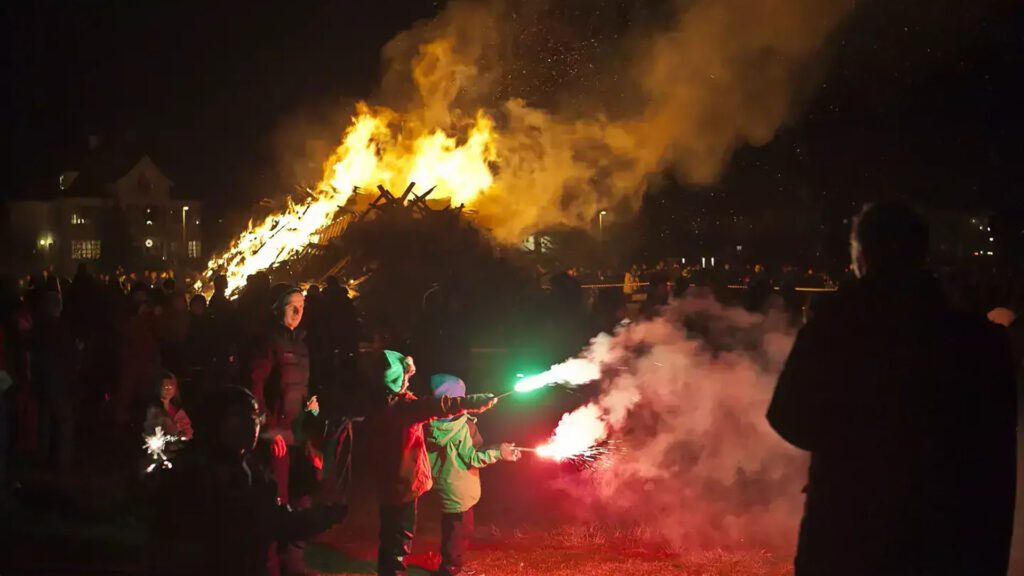
New Year’s Eve is not the only day you will see bonfires and fireworks. The last day of Christmas, The Thirteenth as it is colloquially called, is on January 6.
The last Yule Lad, Kertasníkir or Candle Stealer, leaves for the mountains that day. It is considered backup New Year’s Eve if the weather during New Year’s Eve is too bad to celebrate. It is also the last day you can legally shoot fireworks until the end of December.
The folklore for the last day of Christmas, New Year’s Eve, and Christmas day has gotten muddled through the centuries, and many of the same supernatural elements apply to both nights. It is possible the confusion happened when Icelanders took up the Gregorian calendar. People weren’t sure when Christmas started and ended; for centuries, January 5 was called “Old Christmas Day.”
Animals can speak, and elves move houses
Legend has it that on certain days, cows gain the ability to speak in human tongues. However, it’s crucial to avoid listening to them, as their words can lead to madness. Additionally, seals are believed to transform into human forms, and those who have been bewitched regain their human shape. This time is also significant for the hidden people, as they use it to relocate their homes.
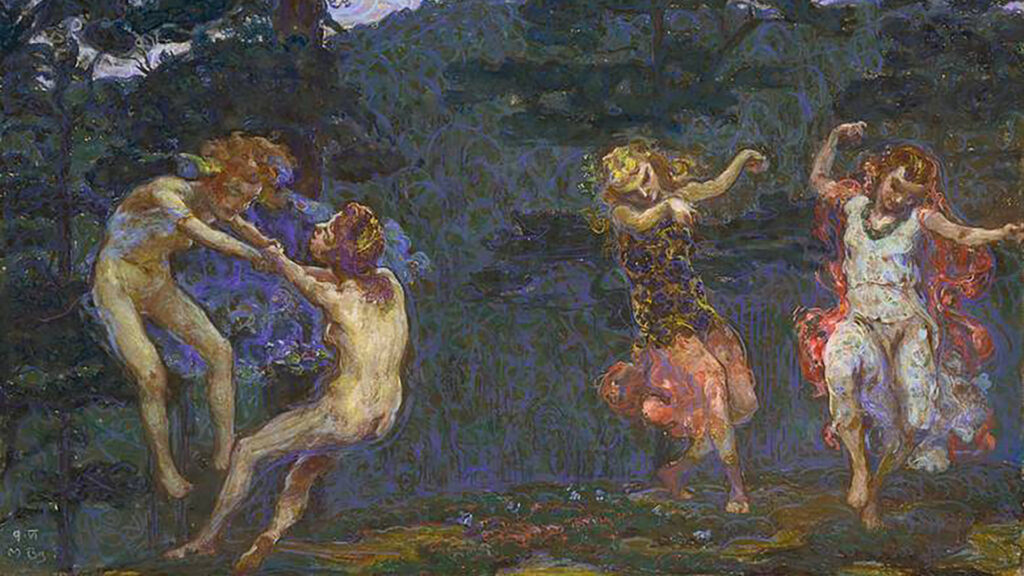
In one tale, The Manservant and the Water Elves, a farmer is baffled at how his servants are killed on Christmas night while everyone is away at church. Ultimately, he hired a brave manservant who saw the Water Elves come and destroy everything in their way so they could hold a Christmas party. He tricks them and saves the farmer from the Christmas night curse.
In another tale, a man once positioned himself at a crossroads, hoping to encounter elves during their house-moving journey. Throughout the night, they presented him with a plethora of splendid treasures, yet he remained silent and accepted them all. However, as dawn approached, a woman among the elves offered him melted fat, his favourite delicacy. Overwhelmed by temptation, he exclaimed, “I have never been able to say no to that!” In an instant, all the treasures he had accumulated vanished. He shared his extraordinary experience with friends and family, but that was just the beginning. Tragically, he soon found himself losing everything—his sanity and his means of living.
Another tale recounts the story of a man who, on New Year’s Day morning, decided to lie in the cowshed, curious to hear the cows converse. As he listened, one cow declared, “Now it’s time to talk.” Another responded, “There’s a man among us.” “Let’s drive him to madness,” proposed a third. “Before dawn breaks,” added the fourth. The man was able to relay what he heard to others, but that was the extent of it, as the cows’ words had driven him to madness.
Amidst the blur of holiday folklore, the last day of Christmas is notably intertwined with elfin lore. On this day, people often don elf costumes, gather around bonfires to sing elf-themed songs, and light up the sky with the final fireworks of the season.
The New Year’s Eve Comedy Show
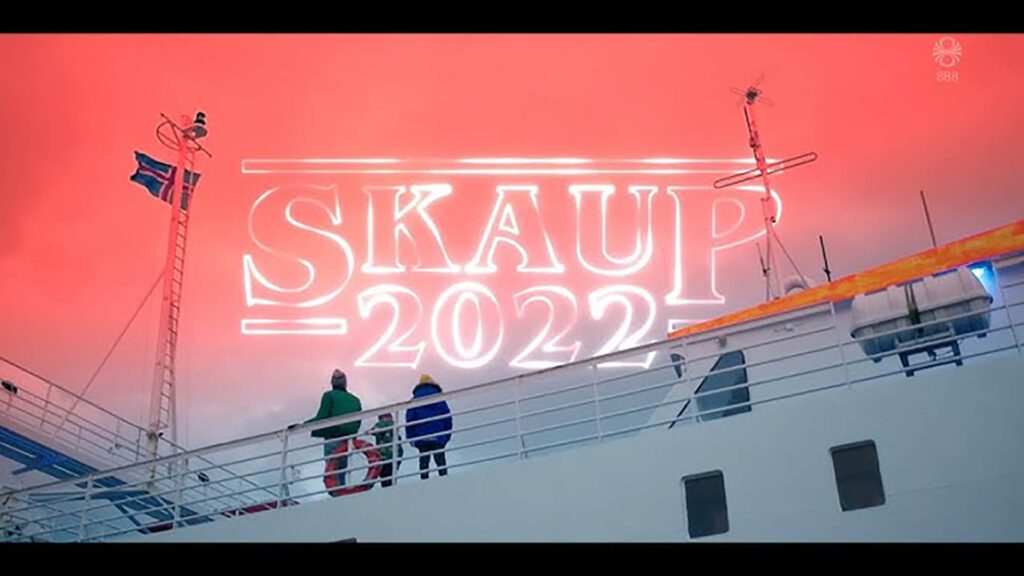
The New Year’s Comedy Show,” broadcast on Icelandic state television every New Year’s Eve, is a hallmark of Iceland’s festive season. Originating on radio in 1948 and transitioning to television in 1966, this program is known for its humorous sketches that poke fun at notable events from the previous year.
Regarded as one of Iceland’s most popular TV broadcasts annually, it reached an extraordinary viewership milestone in 2002, with an estimated 95.5% of the population tuning in. This level of viewership is considered record-breaking in the Western context. The show’s immense popularity also makes commercial slots during its broadcast the priciest on Icelandic television.
The program concludes just before the stroke of midnight, setting the stage for the traditional Icelandic practice of setting off fireworks post-broadcast.
The program has a lasting impact on Icelandic culture, often through memorable sketches. For instance, it famously depicted the Minister of Finance as a Batman-esque character named “Taxman.” Additionally, in 2009, it included a satirical sketch that mirrored an actual protest sign from the Household Revolution, bearing the phrase “helvítis fokking fokk” (god damn fucking fuck), a slogan that resonated strongly with the public sentiment during the financial crisis.
The Comedy Show is broadcasted by the Icelandic Broadcasting Service (RÚV) on two channels, the main one and a second one, where it is broadcasted with English subtitles. We highly recommend you check it out if you can. To get you in the mood, check out last year’s show here.
Áramótaskaupið Live Broadcast
To watch the Áramótaskaup – please use this link to access it. It starts at 10:30 PM (UTC).
I Hold My Breath When I Walk Past You
Please signup HERE for our newsletter for more fun facts and information about Iceland!

